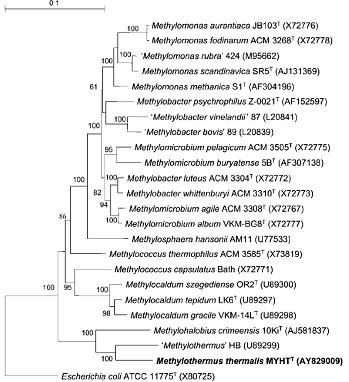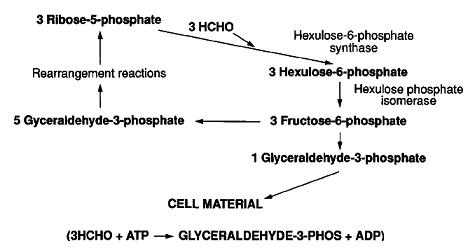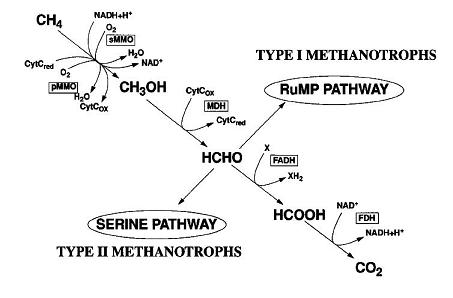
Cell morphology of strain MYHTT. (a) Phase-contrast micrograph. (b) Ultrathin section of cell showing cell wall structure (CW) and the intracytoplasmic membrane (ICM) arrangement. (c) Highly magnified, negative-contrast image showing the surface layer with linear (p2) symmetry. Bars, 1 mm (a), 0?5 mm (b) and 0?1 mm (c).From
http://ijs.sgmjournals.org/cgi/content/abstract/55/5/1877 Jun Tsubota et al. 2005.
Classification
Bacteria; Proteobacteria; Gammaproteobacteria; Methylococcales; Methylococcaceae
Species
Description and Significance
Gram-negative, non-motile coccoids 0.6-0.8 micrometers in diameter. Describe the appearance, habitat, etc. of the organism, and why you think it is important.

Phylogenetic tree showing the relationship of the 16S rRNA gene sequence of strain MYHTT to those of some methanotrophs in the class ‘Gammaproteobacteria’. The sequences were aligned using the CLUSTAL program; 1200 bp were used for the tree construction with the TREECON program (version 1.3b) using the neighbourjoining algorithm. Bootstrap values less than 50% are not shown. The tree was rooted using Escherichia coli. Bar, 0?1 substitutions per base position. GenBank accession numbers are given in parentheses. From
http://ijs.sgmjournals.org/cgi/content/abstract/55/5/1877 Jun Tsubota et al. 2005.
Genome Structure
the nifH gene was not detected with PCR analysis. Also, the mmoX gene was not detected by PCR using the respective primer set that is universal for the known mmoX genes of methanotrophs. Describe the size and content of the genome. How many chromosomes? Circular or linear? Other interesting features? What is known about its sequence?

RuMP pathway for formaldehyde fixation. The reactions catalyzed by the unique enzymes of this pathway, hexulose-6-phosphate synthase and hexulosephosphate isomerase, are indicated. From
https://www.ocean.udel.edu/cms/thanson/TH-MicroRev.pdf Hanson R and Hanson T, 1996.].
Cell Structure, Metabolism and Life Cycle
Methylothermus thermalis requires methane or methanol as a carbon source to growth. This species can use nitrate, ammonia, urea, tryptophan,lysine, glutamate, formamide and Triss as nitrogen sources, but no growth was obsevered without one of these sources.Interesting features of cell structure; how it gains energy; what important molecules it produces.
Ecology
Japanese Hot Spring; symbiosis; biogeochemical significance; contributions to environment.

Characteristics of type I, type II, and type X methanotrophs; phylogenetic signature probes 1041 and 1035 will not hyidize with 16S rRNAs from members of the genus Methylomonas. Probes MM650 and MM850 have been employed to detect some species in this genus. From
https://www.ocean.udel.edu/cms/thanson/TH-MicroRev.pdf Hanson R and Hanson T, 1996.].
References
Jun Tsubota, Bulat Ts. Eshinimaev, Valentina N. Khmelenina and Yuri A. Trotsenko. 2005. "Methylothermus thermalis gen. nov., sp. nov.,a novel moderately thermophilic obligate methanotroph from a hot spring in Japan". International Journal of Systematic and Evolutionary Microbiology. 55, 1877–1884.
Hanson R and Hanson T. 1996. "Methanotrophic Bacteria". American Society for Microbiology, Vol. 60, No. 2.
Author
Page authored by Anthony Heidt and James Goodrow Jr., student of Prof. Jay Lennon at Michigan State University.





